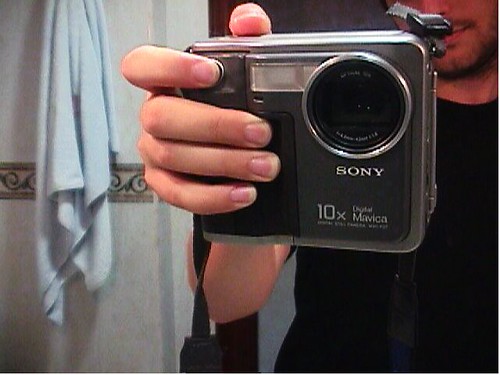Difference between revisions of "Sony Mavica FD7"
(floppy capacity, other features per manual) |
(+cat) |
||
| Line 17: | Line 17: | ||
*[http://esupport.sony.com/US/perl/model-home.pl?mdl=MVCFD7&template_id=1®ion_id=1&tab=manuals#/manualsTab Manual and specifications] from [http://esupport.sony.com/US/perl/index.pl Sony eSupport] | *[http://esupport.sony.com/US/perl/model-home.pl?mdl=MVCFD7&template_id=1®ion_id=1&tab=manuals#/manualsTab Manual and specifications] from [http://esupport.sony.com/US/perl/index.pl Sony eSupport] | ||
*[http://www.rfwilmut.clara.net/about/mavica.html Mavica FD7 profiled] at [http://www.rfwilmut.clara.net/index.html Roger Wilmut's Website] | *[http://www.rfwilmut.clara.net/about/mavica.html Mavica FD7 profiled] at [http://www.rfwilmut.clara.net/index.html Roger Wilmut's Website] | ||
| + | |||
| + | [[Category:Japanese digital]] | ||
Revision as of 01:08, 19 March 2012
This article is a stub. You can help Camera-wiki.org by expanding it.

|
| Mavica FD7 self-portrait image by pmarin (Image rights) |
The Mavica FD5 and the Mavica FD7, introduced together in 1997, were the first truly digital models in the Mavica series from Sony. The more expensive FD7 offered an autofocus f/1.8–2.9 zoom lens, with 10x range having a 35mm equivalent of 40–400mm.
The FD7 uses a sensor intended for television cameras, recording two interlaced fields. These images were downsampled to 640×480 pixel JPEGs and saved to standard 3.5" computer floppy disks. In "standard" quality a floppy can hold up to 40 images; in "fine" mode, up to 20. Anticipating a feature that became ubiquitous in later digital cameras, "picture effects" including pastel, sepia, and B&W modes may be selected.
A proprietary NP-F530 lithium battery pack provides 7.2-volt power.